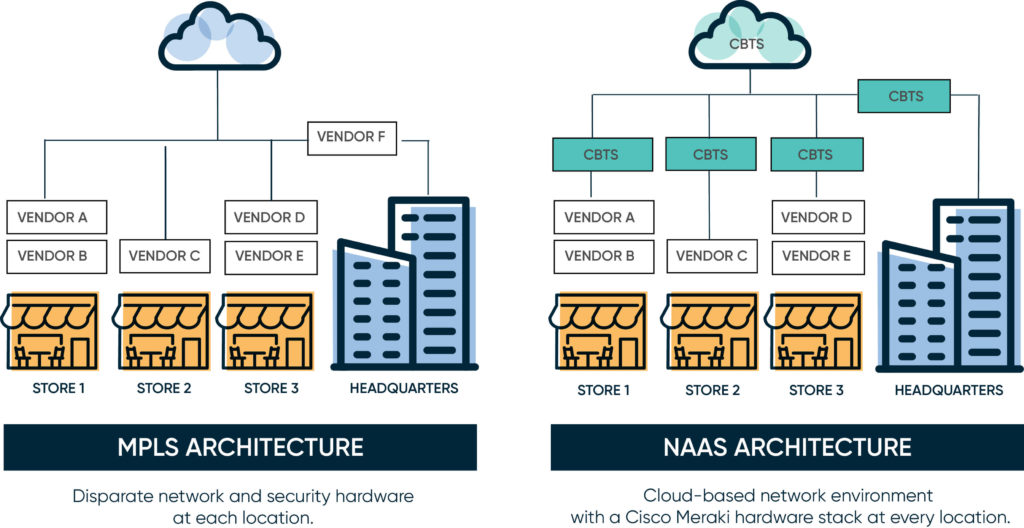The technological landscape of healthcare services is rapidly changing. Many providers are turning to modern healthcare communications technology to stay ahead of these shifts and continue to best serve their patients. However, these solutions often generate new issues for overburdened medical providers—it can be hard to know where to begin. Overwhelmed healthcare staff often have limited resources and time to learn new software and workflows. But for all the problems caused by new tech, many exciting solutions have been developing in the healthcare industry.
This post will review the current challenges facing healthcare communication technology and the technological innovations that are rising to meet them.
Industry trends and challenges
Like in any industry, the consumer drives healthcare innovation and trends. As the healthcare landscape rapidly changes, businesses must integrate systems that allow them to evolve with technology to meet patient needs. Upgraded networks that increase bandwidth are critical to accommodate the widespread adoption of IoT-enabled devices and analytics. Additionally, technological developments require that businesses be willing to embrace new frameworks.

Using modern healthcare communications technology to collaborate and deploy services helps teams create highly personalized, holistic care plans for their patients. Due to these burgeoning technologies, practitioners now have more data at their fingertips than ever.
So, how are they managing and using this data to better serve their patients? For instance, emerging technology helps doctors and healthcare staff search for meaningful patterns in their data streams.
While these advances promise improved patient experience and quality of care, they are out of reach for healthcare businesses that don’t have the fundamental technology architecture in place.
By implementing these solutions, providers can readily respond to market trends.
Innovative healthcare communications technology solutions
Fortunately for healthcare providers, many new systems, workflows, applications, and cloud-native technologies have emerged to help address the challenges of the current environment and keep pace with industry trends.
SD-WAN
Even if health systems manage a remarkable degree of interoperability, old technology and operating systems can cause network instability. Software-defined wide area network (SD-WAN) is a groundbreaking form of networking that is incredibly fast, secure, and adaptable. This new approach combines software with cloud-based technology to deploy reliable, high-quality connectivity across branch offices. Flexible networking is critical across all types of businesses, from doctor’s offices to hospitals to data centers.
By upgrading to cloud-based VMware SD-WAN™, providers can achieve:
- Improved performance and agility to enable purpose-built applications.
- Increased bandwidth to support IoT and data analytics.
- Enhanced real-time operations.
- Minimized burden on IT staff.
Learn more: VMware SD-WAN™: The Network of Tomorrow for Healthcare Today (cbts.com)
Network as a Service (NaaS)
Updating OS, software, and hardware, staying compliant, and maintaining network security are all issues of the highest importance in healthcare. But the cost of implementing and maintaining the latest technology can be overwhelming, especially for small and midsize providers. Actively managed network services unburden IT teams from constant security and compliance updates.
Implementing Cisco Meraki NaaS services allows healthcare businesses to:
- Achieve significant cost savings.
- Protect their networks with high-grade security technologies.
- Offload IT burdens to expert engineers.
- Utilize data analytics to improve patient care.
Learn more: Advancing Healthcare IT – Cost-cutting Strategies (cbts.com)
Network Security as a Service (NSaaS)
Adequate cybersecurity protections are more important than ever. Attacks are costly and disruptive, causing harm to both the bottom line and patient trust. Due to sensitive patient information and data available to healthcare providers, top-notch security is critical. CBTS managed SASE solutions combine SD-WAN technology with cloud-enabled security practices. This approach reduces complexity and achieves secure, agile networks.
CBTS NSaaS makes it possible for providers to:
- Increase threat prevention and assessment capabilities across all networks.
- Improve efficacy with consistent policies for all network users.
- Protect information with the highest level of compliance measures.
- Reduce operational expenses.
Learn more: SASE & ZTNA for Dummies | VMware SASE
Contact Center as a Service (CCaaS)
As regular communication between practitioners becomes the norm, inefficiencies with traditional contact centers threaten normal operations and the patient experience. Additionally, businesses must now account for evolving patient communication preferences. A reliable and flexible cloud-based contact center as a service solution allows healthcare practitioners to deliver exceptional communications experiences.
Five9 cloud contact center provides functional, scalable solutions that integrate with applications across the network. This robust service solves business challenges with:
- Rapid deployment and efficient maintenance.
- Advanced reporting and analytics.
- Support for global remote staff and virtual operations.
- Reduced dependency on costly resources, such as IT staff and hardware.
Learn more: Reimagine Healthcare Customer Experience with Five9
Unified Communications as a Service (UCaaS)
Many healthcare systems, like hospitals or healthcare groups, manage Electronic Health Records (EHRs) with proprietary software that doesn’t work well across systems. Additionally, health providers rely on access to an unprecedented amount of patient data but have limited ways to view and interact with it. Cisco Webex Calling is HIPPA and PCI compliant—ensuring that providers can safely manage sensitive patient information. Cloud-based UCaaS allows businesses to unify and automate communication efforts within and across platforms.
Providers will achieve benefits such as:
- Deliver voice service through the most secure, reliable collaboration applications (Microsoft Teams and Webex Calling) on the market, which is perfect for hybrid/remote workers.
- Versatile supplementary features and application possibilities.
- Simple transitions when updating or integrating applications.
- Streamlined collaboration systems with a single cloud platform.
Learn more: A guide to cloud-based communications for healthcare CIOs
Collaboration solutions
EHRs have revolutionized healthcare, but the lack of interoperability makes it difficult for providers to share patient records between proprietary systems. This limits the amount of collaboration possible between doctors, specialists, and third-party vendors. Additionally, doctors seeking EHRs from outside their healthcare ecosystem may face the same problem.
HIPAA-compliant video communication and cloud file sharing have quickly become required capabilities in the healthcare system. Providers can ensure fast and compliant collaboration with a robust suite of solutions like Microsoft Teams and Cisco Webex.
Implementing collaboration tools will benefit providers with:
- Dispersed communication for voice and chat.
- Simplified deployment and user experience.
- Hybrid capabilities.
- Seamless file sharing and application integration.
Learn more: Cisco Webex for healthcare systems
Gain a competitive advantage with CBTS expertise
Healthcare providers face unique challenges as standard practices shift to accommodate patient needs. It’s more important than ever that businesses are flexible and ready to make changes to stay ahead. CBTS expertise gives providers the tools they need to utilize future-proof healthcare communications technology to deliver the highest quality patient care.
CBTS experts are experienced in strategizing business transformation, deploying and managing innovative technologies, and bringing legacy applications into a cloud environment. Collaborating with CBTS eases the strain on IT teams with fully managed solutions. With 24x7x365 access to expert support, maintenance, and system management, healthcare providers can spend less time struggling with inefficient legacy technologies and more time devoted to patient care.
Get in touch today to see how CBTS can help you optimize your healthcare communication technology.












